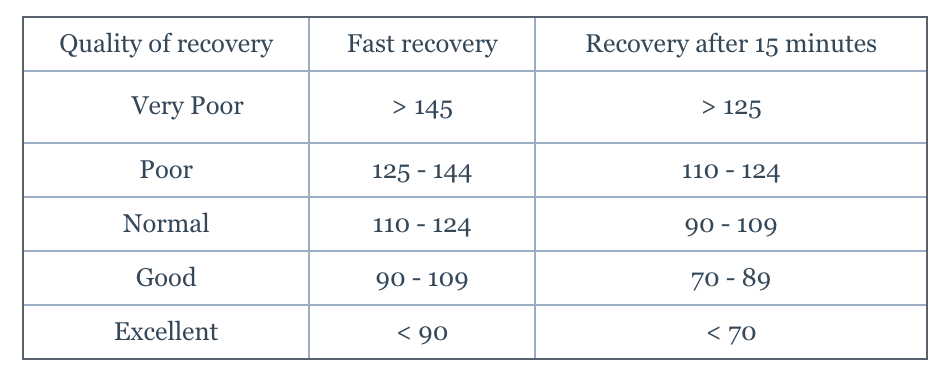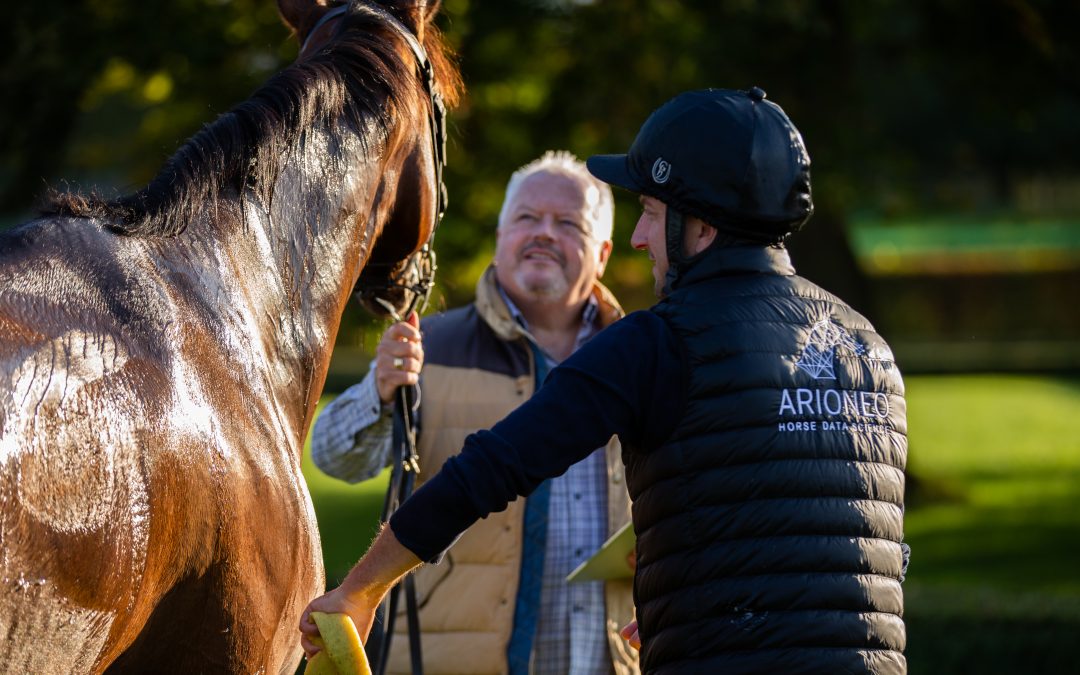Racehorse’s recovery is one of the main indicators of a horse’s fitness: the better the recovery, the better the fitness. The joint analysis of the intensity of the workload and the horse’s physical condition enables the trainer to confirm whether a horse is ready to race. An easy and quick recovery will show an optimal fitness level, and therefore an excellent recovery during heavy work.
How can a racehorse’s recovery be improved to reach an excellent physical condition? This very frequent question does not have a universal answer, as each horse has its own physiology, but here are some tools resulting from the experience of Arioneo data analysts and equine sports veterinarians.
“You can’t improve what you don’t measure”.
If this quote is a must in business management, it is just as true in the management of racehorses stables. Measuring recovery objectively is essential before thinking about improving it.
Racehorse’s recovery: the tools
Tools measuring cardio alongside speed and locomotion provide the necessary elements for the analysis of recovery. For example, Arioneo’s EQUIMETRE gives its users several key parameters:
- Maximum Cardiac Frequency (HR max)
- Post-exercise Heart Rate (HR) to qualify fast recovery
- HR at 15 minutes to qualify the recovery at 15 minutes
- The evolution curve of the HR to be analysed in parallel with the speed

From one session to the next, if at a comparable exercise, the post-exercise HR decreases as well as the HR at 15 minutes, it means that the recovery was improved.
However, the maximum heart rate does not change as it differs from one horse to another and is not an indicator of fitness. On the other hand, if the difference between the maximum heart rate and the after-effort heart rate, then the difference between the after-effort heart rate and the heart rate at 15 minutes are widening, it means there is an improvement in recovery.
On the evolution curve of heart rate during training, we will observe downward curves in heart rate that are sharper and decreasingly correlated with the speed curve, showing a better efficiency of recovery.
The new Analytics tool available to EQUIMETRE Pro customers offers a qualification of the racehorse’s recovery – “Poor”, “Fair”, “Normal”, “Good”, “Excellent”.
This qualification takes into account all the work monitored by Equimetre, using a statistical method inspired by the scientific literature on the recovery subject.
When the recovery is qualified as “Excellent”, or “Poor”, it is similar to the recoveries of the 10% best and respectively worst recoveries. When the recovery is rated as “Good” or “Fair” it is similar to the recoveries of the top 30% or worst recoveries respectively. When the recovery is similar to the 30% of the average recoveries, it is described as “Normal”. Here are the thresholds to which these levels correspond:

Carefully monitored daily, racehorse recovery is a vital fitness parameter for sports preparation and health monitoring. An unexplained deterioration in recovery can be a symptom of cardio-respiratory pathologies, such as arrhythmias, which must be investigated by a veterinarian.
The veterinarian can use the EQUIMETRE data and extract the electrocardiogram (ECG) from the training to refine his diagnosis.
Gradually adapt the workload
One way to improve a racehorse’s recovery is the individual adaptation to work and the gradual increase in workload.
Implementing a tiered work strategy may be appropriate, with each tier marking an increase in workload. Before moving up to the next level, recovery must stabilize at a normal level for the exercise to be acquired. Each horse has a unique metabolism that will not allow it to progress through the tiers at the same rate as another horse. If one horse can easily pass the first 3 levels and then spends more time on the 4th level, another horse may have difficulty passing the first two levels but progresses through the next levels faster than the first horse.
When a stage is truly difficult for a horse who cannot show good recovery from an exercise that has been repeated several times, it may be wise to give it a short break and obtain veterinary advice before resuming intense work.
Practice active recovery
During an intense effort, the waste produced by the muscles, known as lactic acid, must be eliminated to promote a recovery respectful of the muscle fibres and the metabolism.
What the science says about it
The majority of studies on this subject have been carried out on thoroughbreds and CCE horses.
- Increased lactic acid elimination capacity: The study by Marlin et al. 1986 carried out on thoroughbreds shows that moderate-intensity trotting carried out during the thirty minutes post-exercise increases the disappearance rate of blood lactic acid in all subjects. It is valid when the lactate level is between 10 and 11 mmol/L. Auvinet et al. study, in 1991, demonstrates the same results on CCE horses.
- Increase in blood pH: The blood pH is a measure of the blood’s acidity and ranges from 0 (very acidic) to 14 (very basic). Marlin et al. 1986 and the Seo frog, 1984 showed that lactate permeability increased with increasing blood pH. It means that lactic acid is less likely to enter the bloodstream, which is beneficial.
- Improved cardiac performance and muscle blood flow: Finally, the Hubbell et al. 1997 study in Thoroughbreds shows that cardiac performance is improved when the horse is recovering in motion rather than at rest or in total immobility.
Active recovery in two stages is advised and its effectiveness is proven by scientific studies (this work can be found in particular in the studies carried out by Patrick GALLOUX in collaboration with Drs Éric BARREY and Bernard AUVINET).
What is a 2-step active recovery?
- First time: Following the very intense effort, the rider should stop the horse and walk for a few meters. This will enable the heart rate to drop significantly. Once 2-3 minutes have passed, the horse can trot long reins, at the pace he chooses, in the attitude he chooses and at the speed he chooses, for 5 to 10 minutes depending on the age and preparation level. Trot should not be too fast not to fall into the anaerobic gage again. Practising active recovery (5-10 minutes of active recovery at trot) versus passive recovery (20 minutes at walk) will have the lactate levels of athletic horses two times lower.
- Second time: The complete restoration of the muscle takes place between 24 and 48 hours after the intense effort, depending on the horse. Therefore, it is very useful to carry out an active recovery exercise the next day to complete the elimination of the waste accumulated during intense work. This warm-down session can take the form of a trotting or short canter and is ideally followed by a day of complete rest.
Racehorse’s recovery: testing fractional training
Interval training or split training, which is very common among trotters, helps to push back the horses’ “threshold”. The threshold is the effort zone from which the muscles begin to produce lactic acid, thus passing into the anaerobic work zone.
Difficult to carry out in gallopers which are not used to work in intervals, this exercise must be carried out with care and by gradual introduction. It is mandatory to alternate intense phases and phases of recovery with serenity, ensuring that the horses do not become too stressed and nervous to prevent the risk of injury. This exercise is not recommended for young gallopers, for whom working in calm and serenity is more complicated.
To adjust the horses to work occasionally in split, a relatively short track with a bend at the end can provide support. Slowing down before the bend and then stopping the intense phase there will help the horses to assimilate and understand that this point is the end of the acceleration phase. The return to the beginning of the track can be done at the small recovery trot, before starting again on acceleration on the same portion of the track.
In addition, during intense phases, the intensity must be contained at the canter and must not reach maximum speeds, always to preserve the serenity of this work.
Keywords: active recovery, racehorse’s recovery, fitness evaluation, horse racing, cardio data analysis, recovery horse


